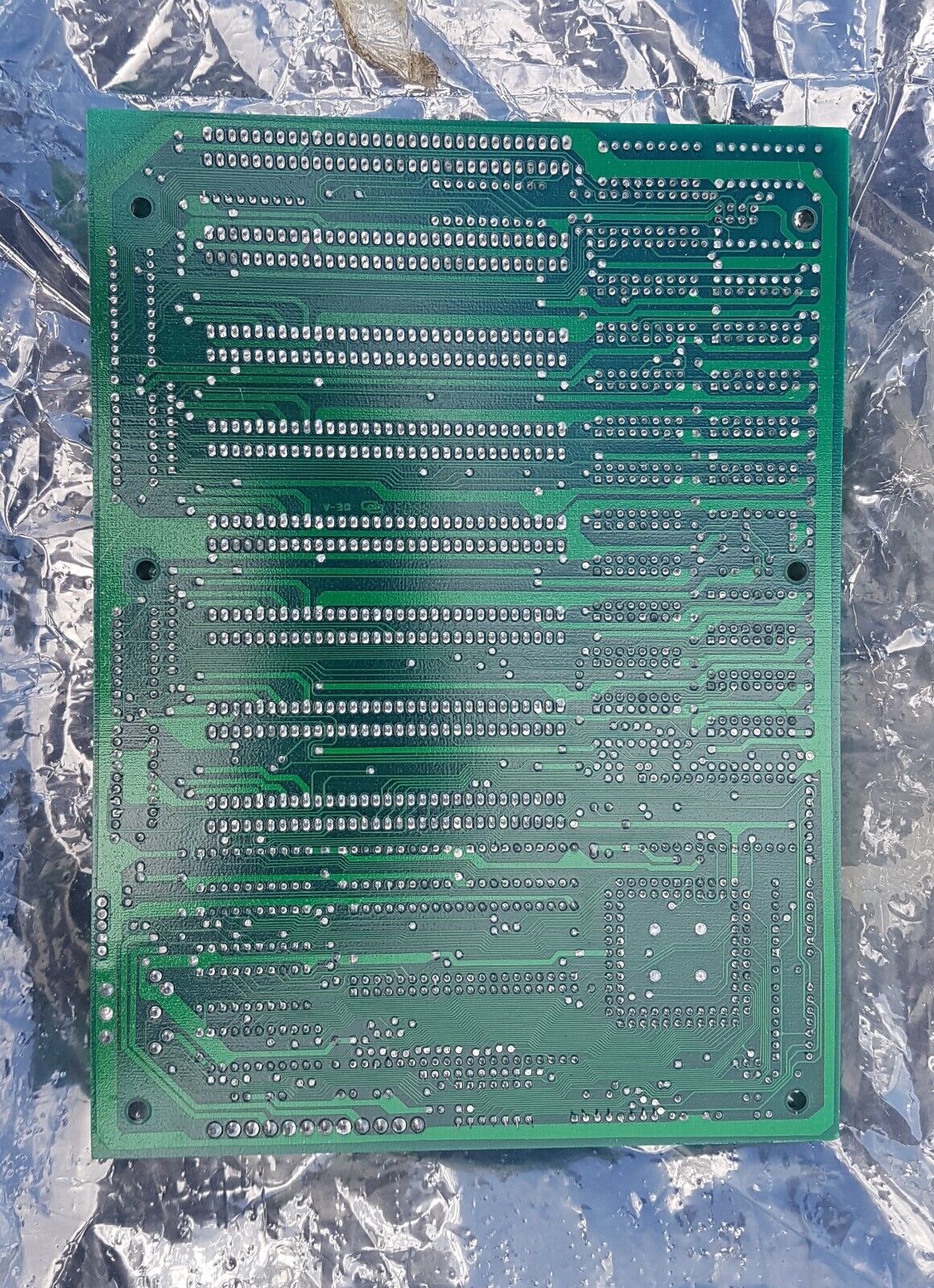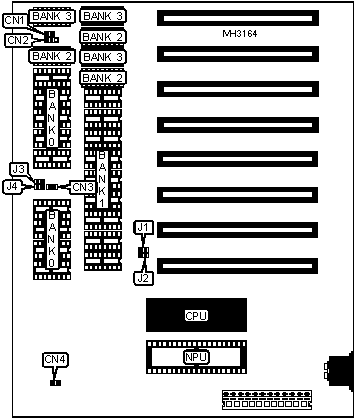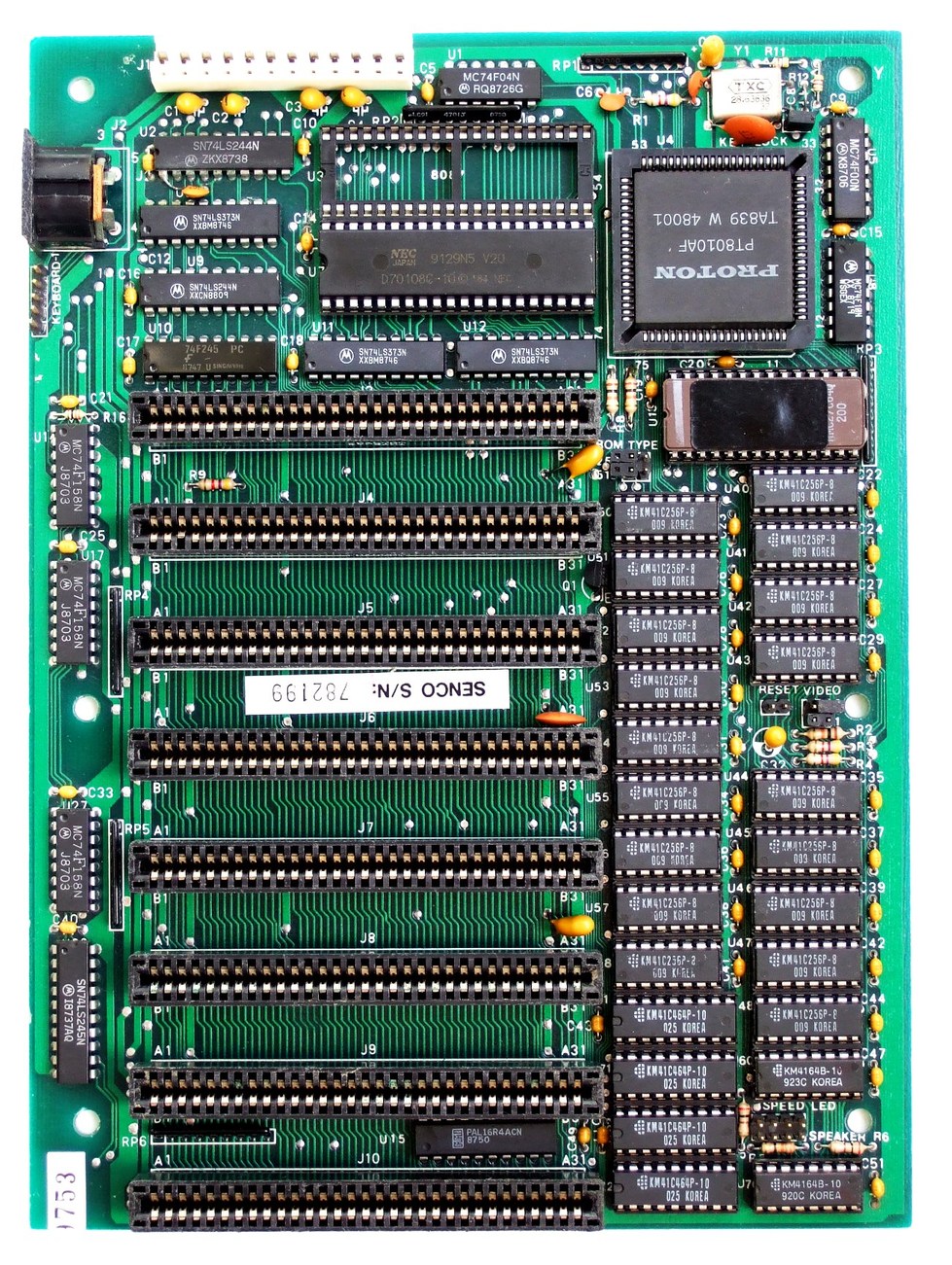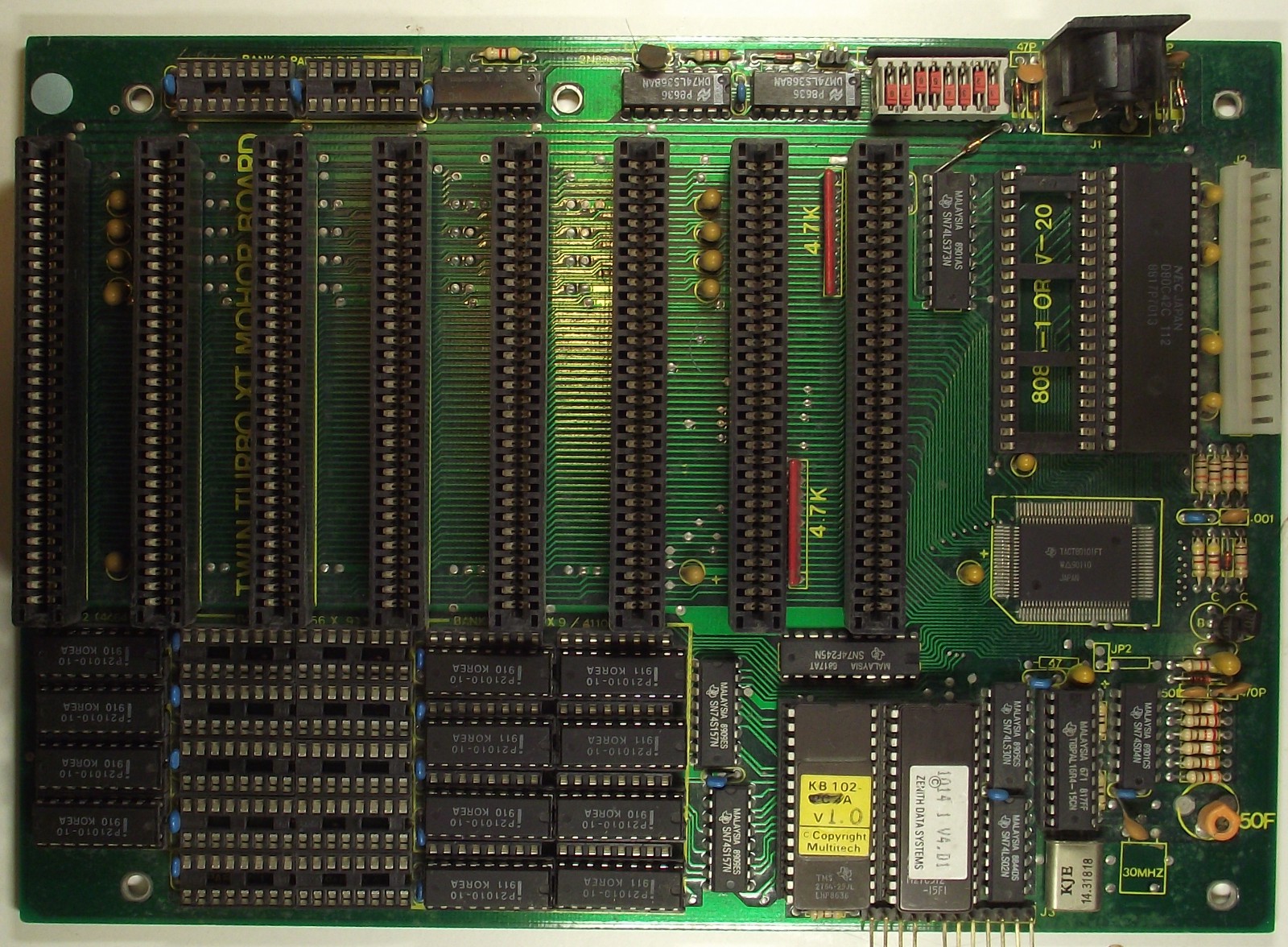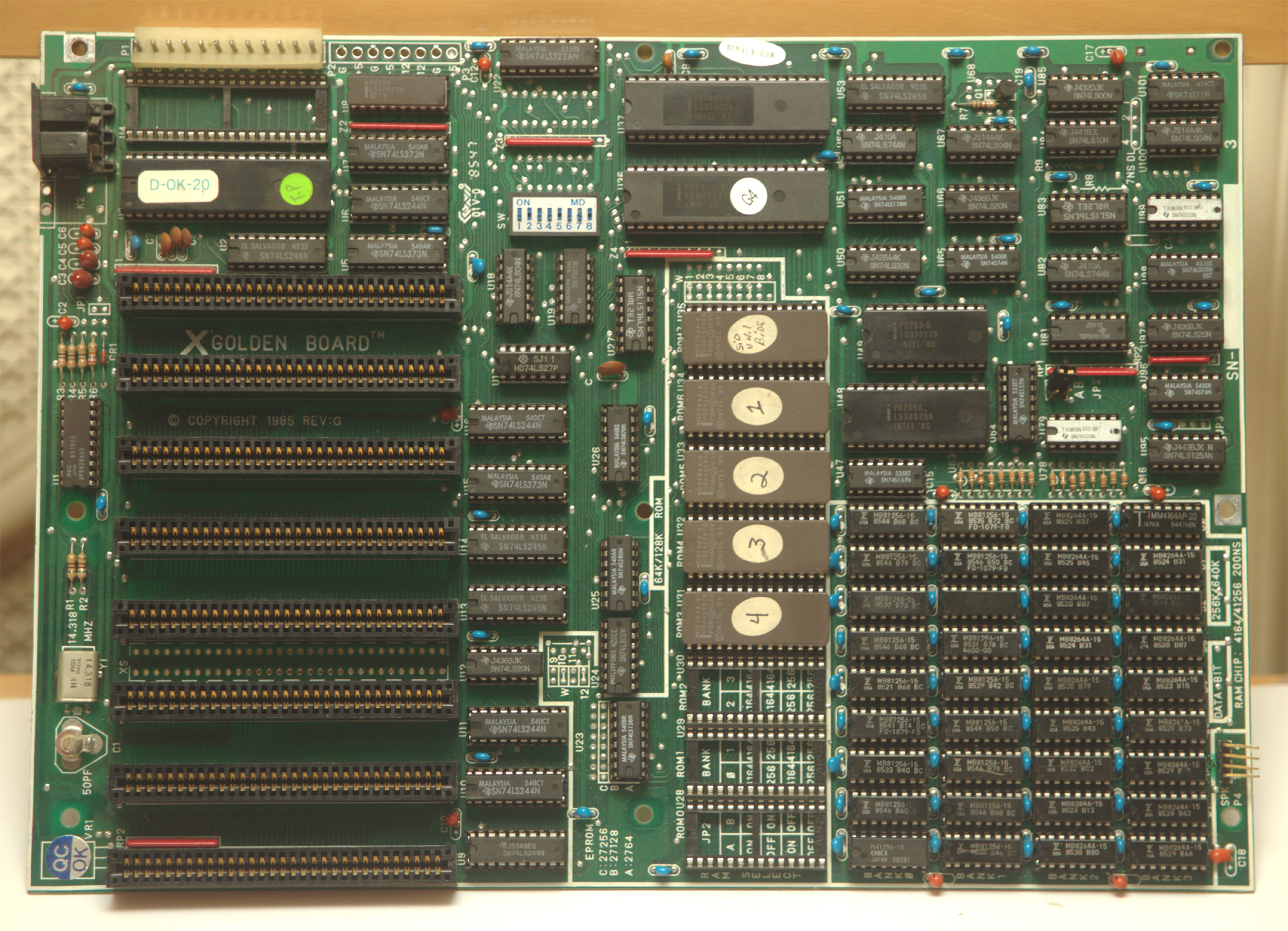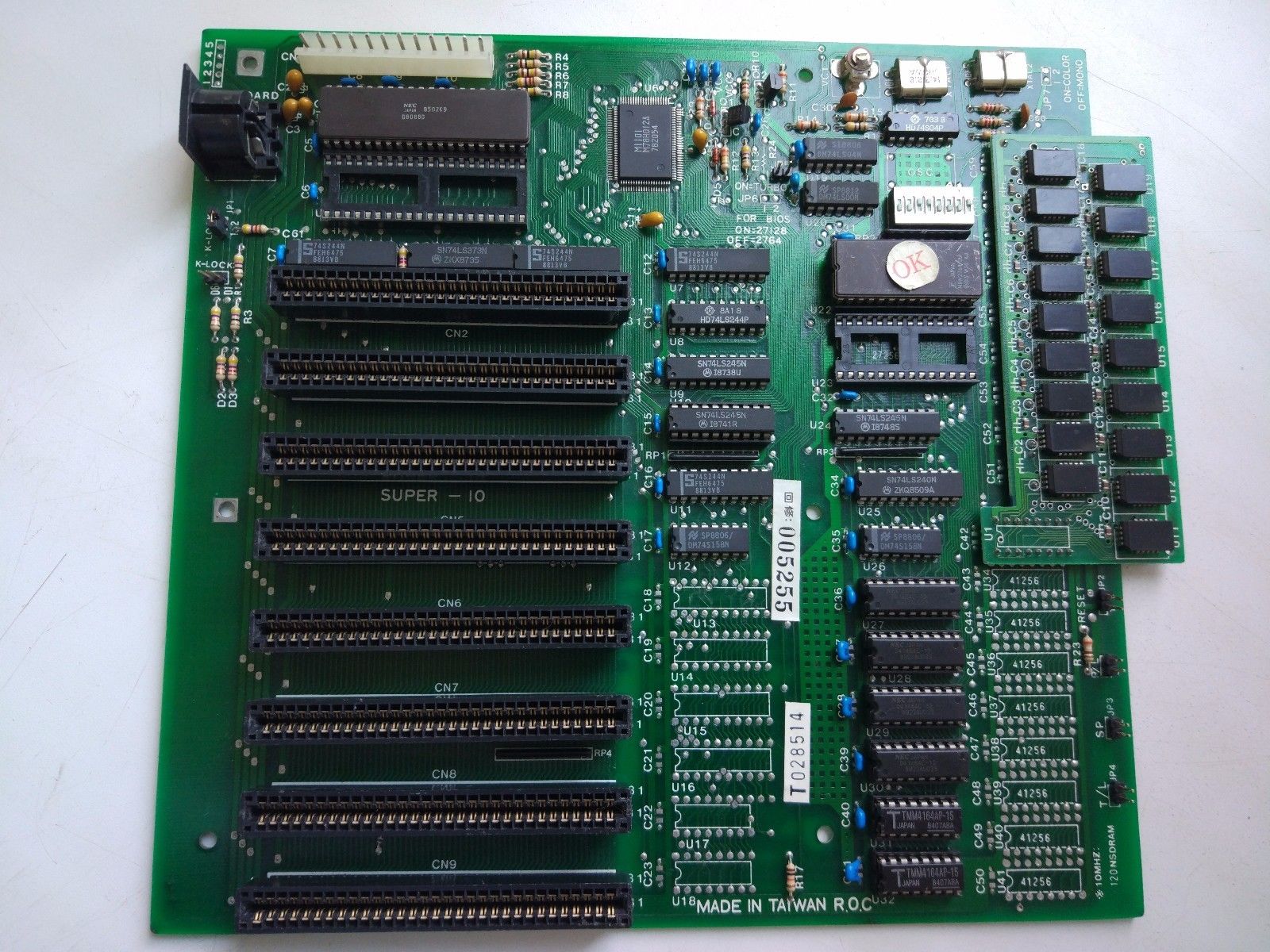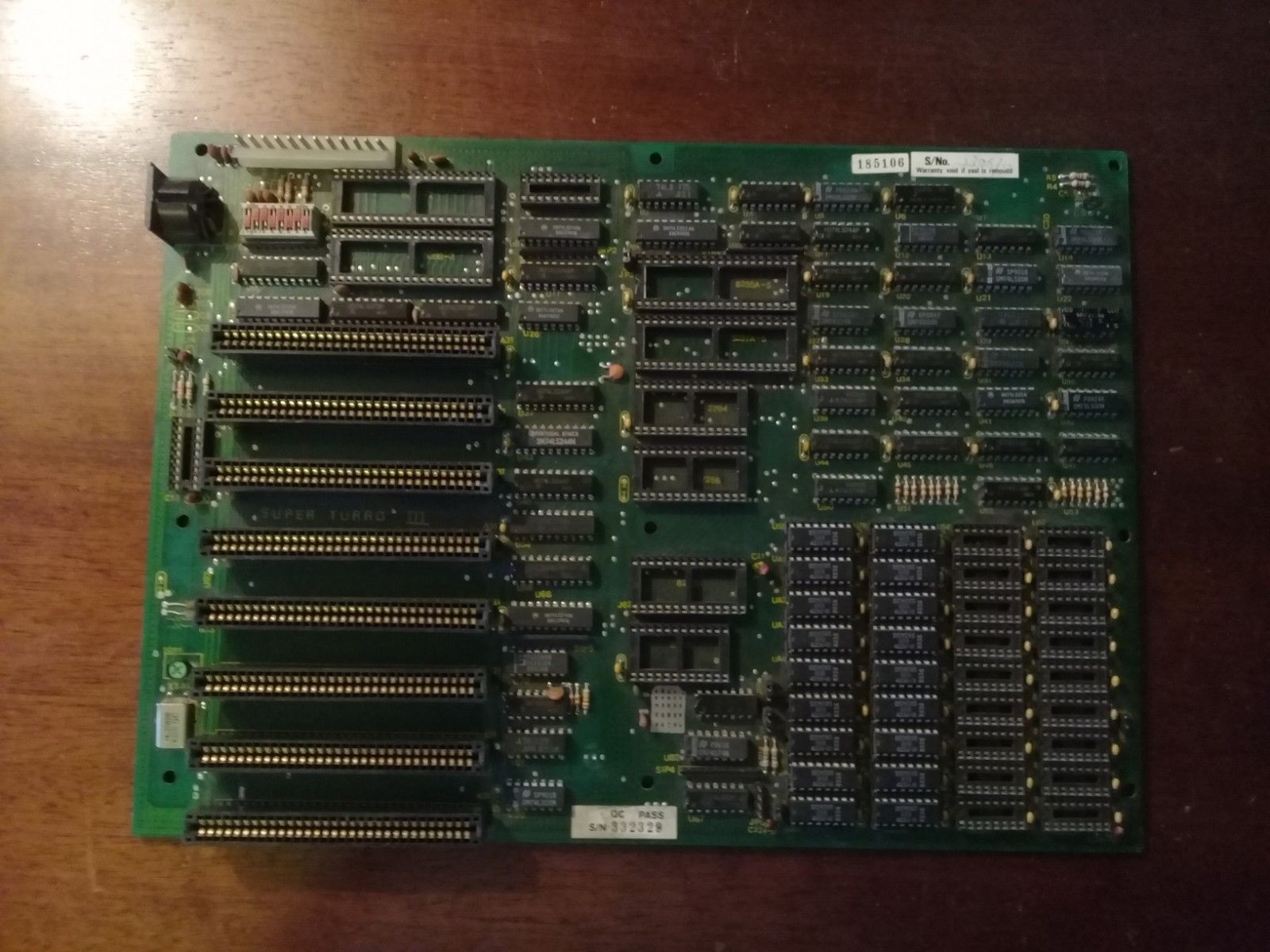XT Motherboards
The IBM PC and XT were cloned/copied by hundreds of companies in the late 80s and early 90s. This page is dedicated to looking at a number of these motherboards. Most aren't easily identifiable due to their ubiquity and the fact that the original manufacturers would sell their designs to a number of resellers.
Note that when powering an XT or compatible motherboard using an AT power supply, many boards follow the IBM XT standard which requires that pin 2 of the P8 power connector disconnected. This is a red wire that provides +5V DC in the IBM AT. Some XT boards will fail to boot if this wire is connected and the power supply may click continuously.
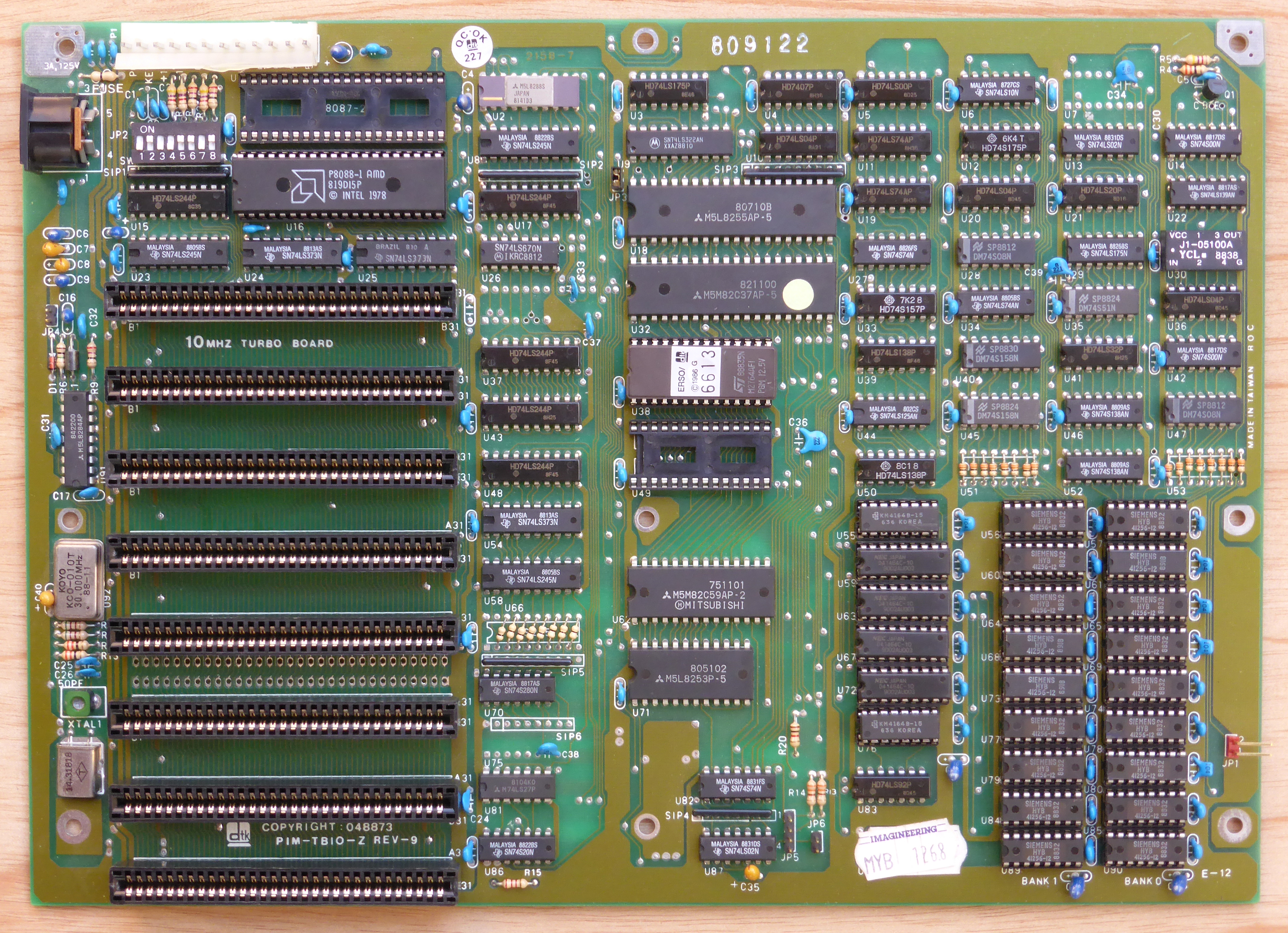 DTK PIM-TB10-Z
DTK PIM-TB10-Z
This board from Datatech Enterprises Co. (aka DTK) follows the design of the IBM PC-XT in both size and layout. It has the standard eight 8-bit ISA expansion slots, socketed DRAM chips in the lower-right corner (18 x 256 kbit chips in Banks 0 and 1, a total of 576 KB plus 48 KB to their left in 6 x 64 kbit chip), ROM sockets in the middle, and CPU/math-coprocessor sockets in the top-left.
It supports "Turbo" mode whereby the 10 MHz Intel 8088 typically runs at 10 MHz, but will slow down to 4.77 MHz when the turbo switch is off. The DIP switches just to the left of the CPU are most likely configured the same as you would on a real IBM XT. Click here to see the standard IBM PC and XT DIP switch settings and how to configure them.
The two large chips in the top-centre are an Intel P8255 PPI (Programmable Peripheral Interface) chip and below it a P8237 DMA controller. Below these are the two ROM BIOS slots (one populated) - the original PC and XT had the BIOS firmware "split" across two chips - one identified as "high" and the other identified as "low". Most XT clones have an 8 KB BIOS held in a single 2764 ROM chip, like this one.
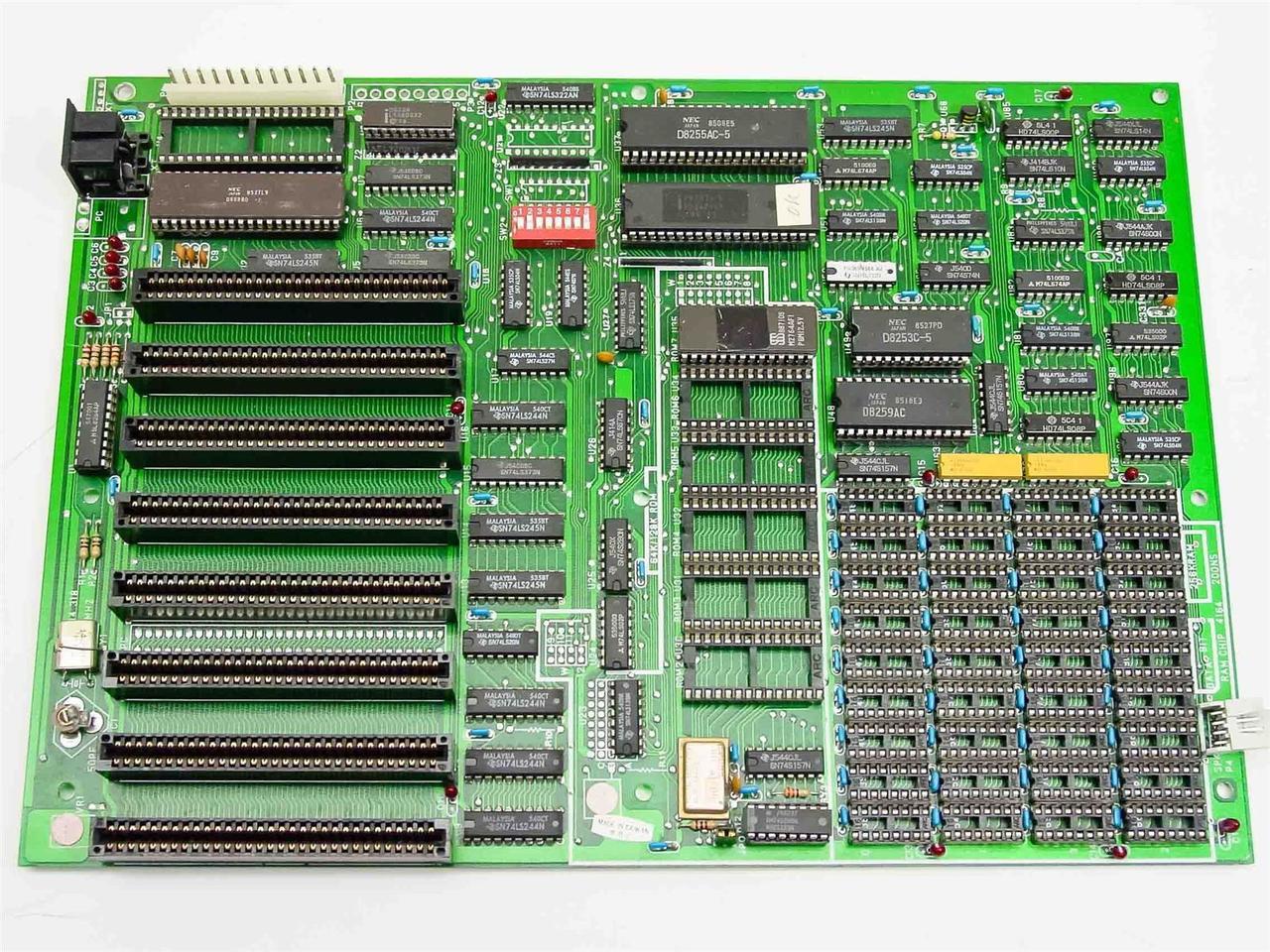 DTK PIM Turbo 10-V01
DTK PIM Turbo 10-V01
Another XT board from Datatech Enterprises Co. (aka DTK). This one is quite early, as the P8/P9 power connectors are round pins rather than rectangular which are seen on later AT boards.
Like to IBM 5150 and 5160, this provides additional ROM sockets with only one in use which is the ROM BIOS. It has the full complement of eight 8-bit ISA slots for expansion, and is an AT-sized board. It looks like 4 banks of memory are available.
 Juko ST ("Super Turbo") 8088
Juko ST ("Super Turbo") 8088
The Juko ST motherboard, sometimes seen as the Unique UX-12, is a mid-size XT motherboard, offering eight 8-bit ISA slots for expansion. It has an ASIC (Application-Specific Integrated Circuit) which replaces a lot of discrete components, giving the board higher reliability. This one has an NEC V20 running at 8 MHz.
Known BIOS Revisions: Juko ST BIOS v2.30
It has More pictures here: 1 2 3 4 5
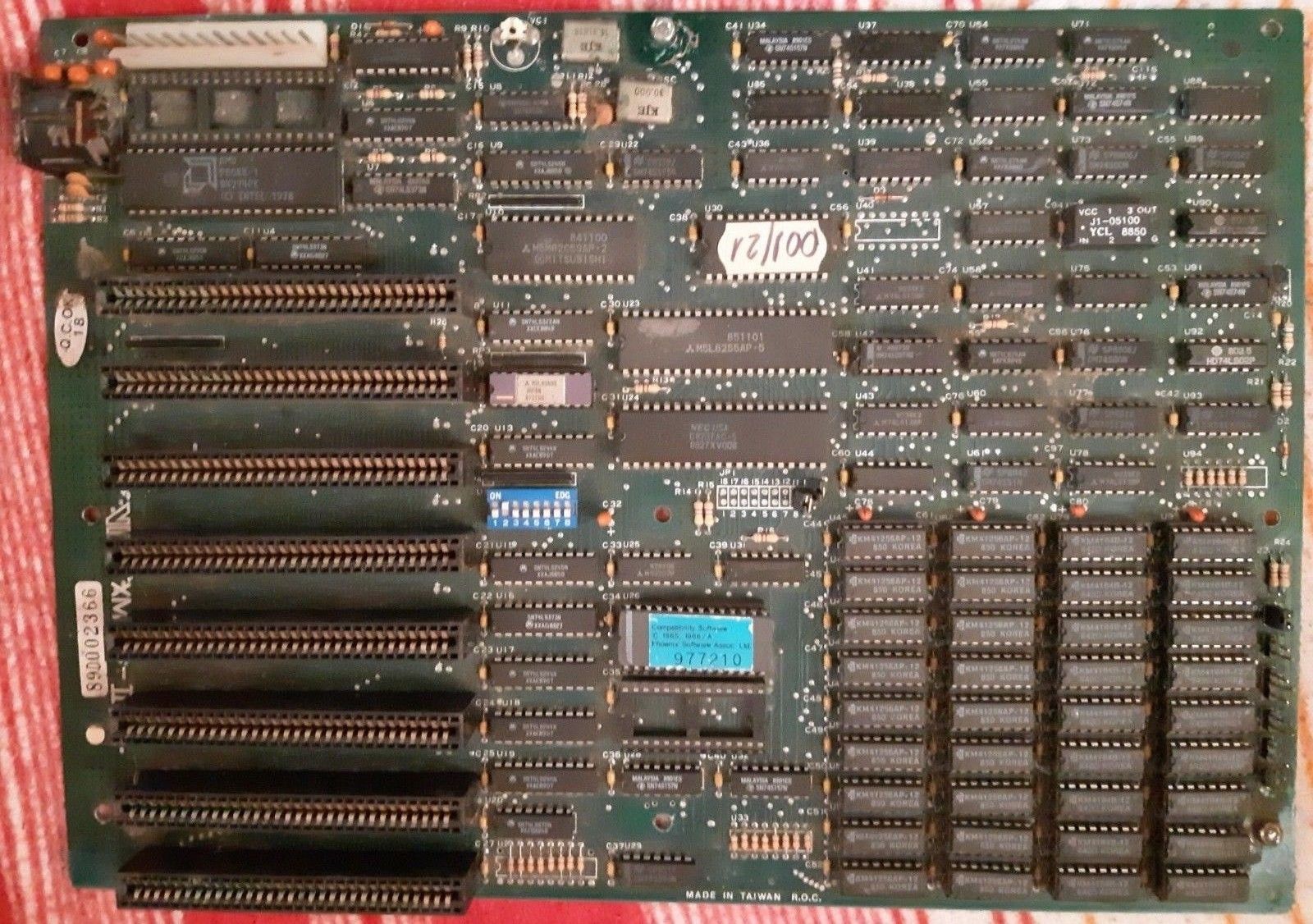 VIP TXM/10-II
VIP TXM/10-II
The VIP motherboard is a full-size XT motherboard, offering eight 8-bit ISA slots for expansion. It is about the size of the original IBM XT motherboard, and as such has all the discrete logic above the memory banks.
It has More pictures here: 1 2 3 4
 Zeta "Peter-10" XT
Zeta "Peter-10" XT
A late XT board from 1991, this one came from a London-based computer wholesaler called Morgan Computers. The board is really small, about the size of a modern-day Micro-ATX motherboard, and a very neat layout.
It has eight 8-bit ISA slots and is running a Sony-branded NEC V20 at 8 MHz. The crystal running at 28 MHz means this CPU is overclocked slightly to 9.54 MHz. A single ROM chip can be seen at the bottom marked "P10" (this appears on the boot screen also), and the large single ASIC single-chip chipset is a Proton PT8010AF. This I believe is a knock-off of the Western Digital Faraday FE2010A.
Towards the lower left corner, 1 MB of DRAM chips is installed, though only the first 640 KB is 'visible' to DOS.
For a lot more detail on this board, I recommend you read my 3-part XT Restoration article.
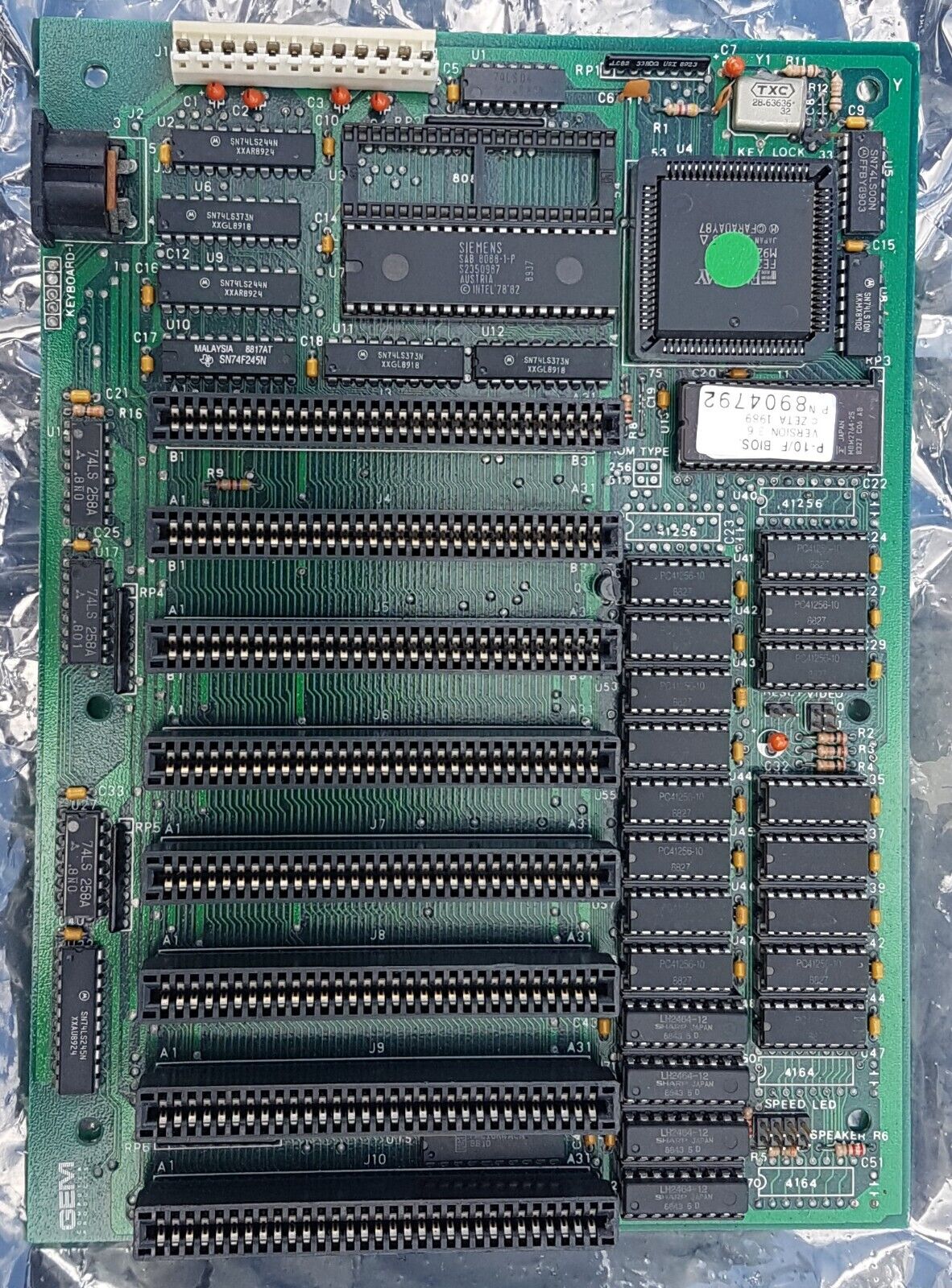 GEM Computer Products GEM-10
GEM Computer Products GEM-10
These motherboard pics were contributed by Al Boyanich.
An XT board from 1989 that appears to be an early version of the ZETA P-10 motherboard above. It uses the same Faraday FE2010A chipset and the same ZETA P-10 v3.60 BIOS.
It has eight 8-bit ISA slots and is running a Siemens-branded 8088 at 10 MHz. The crystal running at 28 MHz means this CPU is underclocked slightly to 9.54 MHz. A single ROM chip can be seen at the bottom marked "P-10/F" (this appears on the boot screen just like the ZETA P-10 board above - see boot-up pic below).
Towards the lower right corner, 256 KB of DRAM chips is installed as sixteen 256Kx4.
The last image below shows the 100%-compatible/clone of the FE2010A, the Proton 8010AF.
More Images
According to info from the Vintage Computer Forums, member creepingnet reported on companies MEC, GEM and C.MORE:
"MEC - Micro Equipment Corporation
http://www.trademarkia.com/correspondent-micro-equipment-corp-1-197223
According to Trademarkia, MEC (Micro Equiptment Corporation) is the main company that runs these other two enterprises. MEC made computers and sold products that were outsourced apparently. MEC focused on the home market. I might have seen some MEC computers pass me by but I can't remember what I saw. MEC was advertised in Byte Magazine in Volume 20 Issues 5-8 on Page 111 in 1995. The first known use listed on Trademarkia is 5/30/1983 - but they may have existed earlier as one of the trademarks on trademarkia lists the company as first use being "unknown".
GEM Computer Products started in 1983 and was their other badge which they made computers under and provided equipment under. GEM Computer Products seems to have had a wider distribution as I've actually found more than one system that they have built. The odd thing though is certain listings on Trademarkia list GEM computer products as being a "Military" branch. Considering that the two GEM machines I've owned came from people who worked in the military - I can verify this is true. I also saw another one for sale recently (an XT 286 clone) that was from near where I got my 286 AT from. GEM got an article in a 1987 issue of InfoWorld as releasing a XT replacement motherboard called the "Pepper XT". What I do know is that brand continued until 1997 inline with MEC and C.MORE. First use of this brand was in 5/3/1983.
C.MORE was a series of stores in Georgia and possibly East/Central Alabama as well as a brand they manufactured equipment under, first used on 6/30/1993. I think I recall seeing one of their stores as a kid in Peachtree Mall in Georgia sometime around that time. They also apparently marketed equipment under that brand too which I may also have seen around.
Apparently they were still going well into the 1990's here's a YouTube video of someone running a Pentium system from the mid 90's - https://www.youtube.com/watch?v=RSi6RpFCQ9o - It looks like they were using Enlight chassis by that point in time."
Twin Turbo XT
This late XT board design is very common. Like the Zeta above, this board is small, about the size of a modern-day Micro-ATX motherboard. It is built around the TACT8010 XT chipset.
It has eight 8-bit ISA expansion slots, supports Intel 8088 or NEC V20 CPUs, and is populated with 640 KB of DRAM chips (12 x 1Mx1 Fast Page 100ns). Note the power connector is the old AT-style, but has circular pins instead of the more common 'blade'-style pins. Slightly at odds with other small XT boards, this one doesn't come with an 8087 math coprocessor socket. The chip to the right of the 8086 CPU socket is the keyboard controller (NEC80C42). Note the silkscreen incorrectly suggests either an 8086 or V20 CPU - this should read "8088 or V20" - the chipset only supports these CPUs, not the 16-bit internal 8086 or V30.
The BIOS on this particular board appears to be from Zenith Data Systems.
X Golden Board
This is an early XT clone motherboard from 1985. Just as with the IBM XT, it has eight 8-bit ISA expansion slots. In the top-left you can see the socketed CPU and above it an empty slot for the 8087 math coprocessor.
A bank of eight ROM sockets (5 populated) exists in the middle of the board - the top one is the main BIOS ROM. The original IBM PC and XT catered for some applications to be available on ROM chips, but the concept never really took off, probably due to the high cost of ROM chips as opposed to floppy disks.
640 KB of DRAM chips fills the bottom-right of the board. At the top-centre (above the ROM bank) is an Intel P8237 DMA controller. The chip above it is most likely a Programmable Peripheral Interface (PPI) chip.
Super-10 Turbo XT
An interesting board, as this comes with 640 KB of DIPP RAM on a daughter card that plugs into the motherboard. There is provision on the board for another bank of memory (see the pads in the lower right corner), but no RAM chip sockets.
More pictures here: 1 2 3 4 5 6 7
Super Turbo-III
This model from an unknown manufacturer follows the ever-popular XT board layout. It has the old-style AT power connectors (round pins, not blades). This board appears to be missing most of its chips though - no 8088 CPU, no ROM BIOS, and no keyboard controller. DMA controller also?
More pictures here: 1 2 3 4 5 6 7 8 9 10
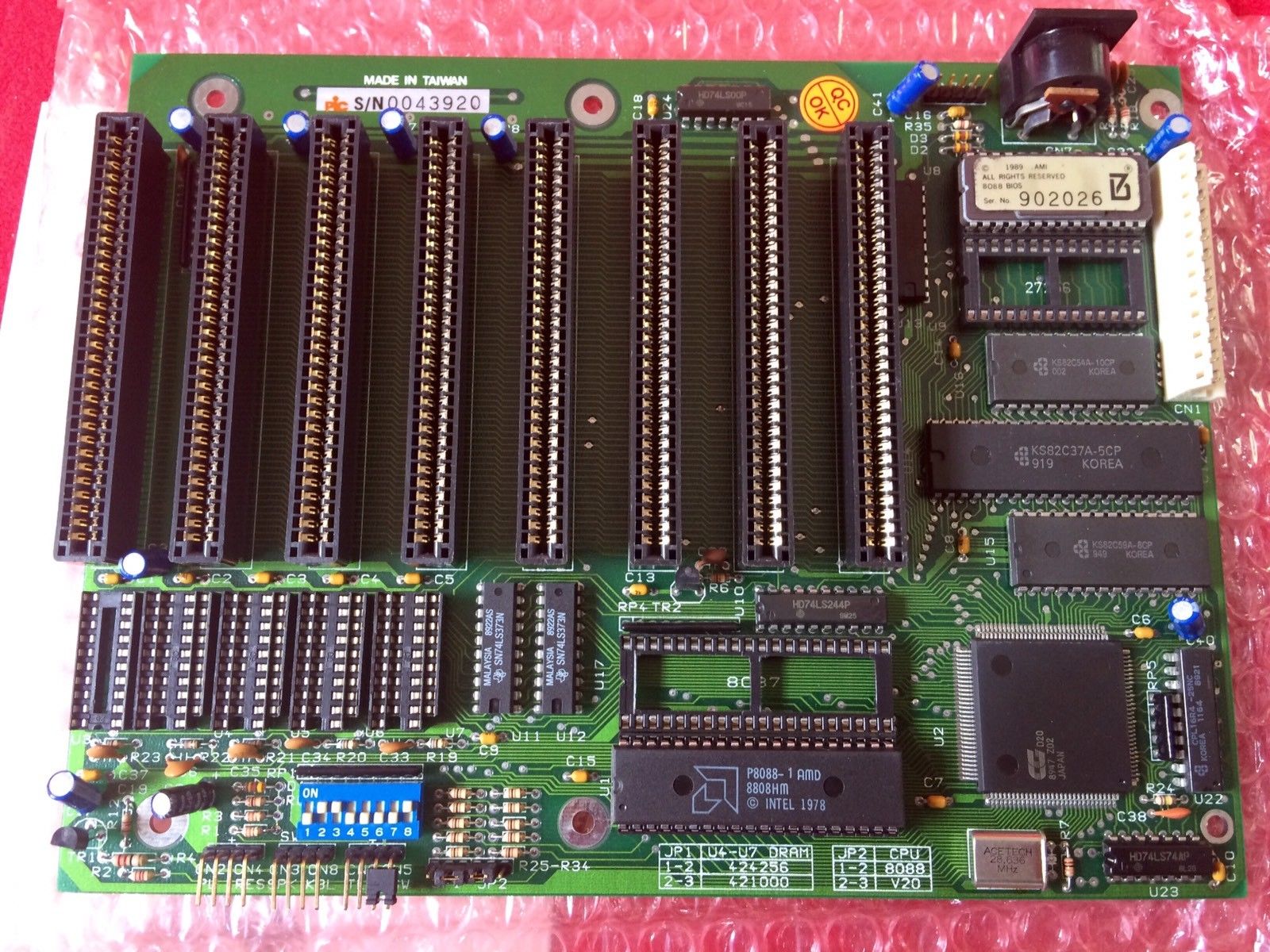 MB-1100 Turbo XT
MB-1100 Turbo XT
The MB-1100 is another of the newer XT boards with a lot of the discrete components replaced with an ASIC (Application-Specific Integrated Circuit), which gives it higher reliability.
One interesting thing about this board's design is the main CPU being down by the ASIC, not up near the power connectors like most boards.
More pictures here: 1 2 3 4 5 6 7
